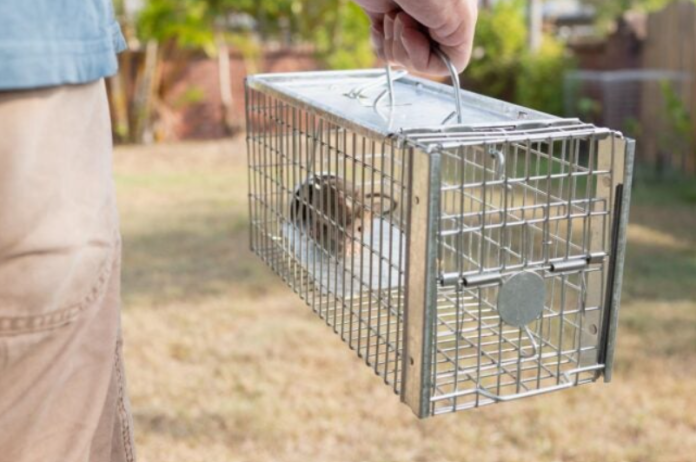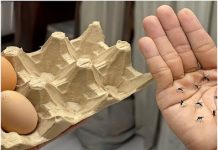An infestation of mice can make anyone nervous. These pesky critters can carry a plethora of dangerous diseases and cause a lot of damage to your home, tearing out walls and wiring. Homeowners wondering how to get rid of mice in their homes will be happy to know that there are several simple solutions for dealing with mouse infestations.
First, prevention is key. Seal cracks and holes where mice can enter and eliminate food and water sources that can attract them. Keep clutter away from the foundation of the house and garage to minimize environments where mice can nest. Encouraging natural predators can help reduce the potential mouse population. Build an owl nesting box on the property: one barn owl can eat up to 1,000 mice a year! Having a cat can also help keep mice at bay; not only are cats excellent hunters, but their scent alone will deter mice from moving in.

If prevention methods fail, various trapping methods can be effective in getting rid of mice. If you’re wondering how to quickly get rid of mice in the home, take a look at this compilation of methods that focus on safe and humane practices. Don’t feel like getting rid of these rodents yourself? Consider calling one of the leading pest control companies, such as Terminix, Orkin and Aptive, to do the dirty work for you.
Time required: 1 week to 3 months, depending on the severity of the infestation.
Difficulty: beginner
Estimated cost: 10$ to 200$
Before you start…
How to get rid of mice
Mice are nocturnal animals, so they tend to go unnoticed during the day. That’s why it’s not always obvious that mice have taken up residence in a home. Look for dirt stains on floors and walls, noises in the walls at night, droppings in the house or the smell of dead mice. Keeping the house clean and clutter-free will make it easier to spot these unpleasant signs of mouse infestation and make it a less rodent-friendly space.

Tips for getting rid of mice
Identify and close any gaps where mice can enter the home.
Eliminate potential food sources, such as crumbs.
Use natural deterrents such as peppermint oil.
Safety Tips
Be careful when handling mouse droppings or dead mice, as they can carry disease and harmful bacteria.
If it is absolutely necessary to use pesticides, be sure to place them out of reach of children and pets.
STEP 1: Plug all holes.
Mice can squeeze through a hole the size of a nickel. So be vigilant and carefully inspect your home’s interior and exterior walls, as well as the foundation, for holes. Large holes or cracks should be repaired; small ones can be plugged with steel wool or copper wool pads. Secure the plug to the side of the hole so that mice can’t pull it out.
Mice in the house?
It may be time to call in a pest control specialist. Get free, no-obligation quotes from services near you.
STEP 2: Maintain your home.
Replace cracked or broken weather stripping around doors and windows to keep pests (and drafts) out. Cover the dryer vent or any exterior vents with ¼-inch hardware cloth. Be sure to seal gaps around air conditioners installed in windows or walls.
STEP 3: Do not give cookies to mice.
Mice will not stay in a house that does not offer them a constant supply of food and water, so get rid of obvious sources of sustenance first. Store all food (especially pet food and birdseed) in airtight containers, promptly clean up spills in the kitchen, and fix leaky faucets. It is equally important to seal all garbage cans and empty them frequently. Next, place outdoor bins as far away from your home as possible to avoid attracting pests.
STEP 4: Clear the outside clutter.
Keeping the outside of your home clean and tidy eliminates potential hiding places for mice around the house, garage and yard. Don’t let weeds, brush or trash accumulate near the foundation and keep firewood away from the house. Look for natural ways to remove weeds or consider hiring a professional to keep your home’s exterior presentable.
STEP 5: Clean out the garage.
Mice aren’t picky when it comes to choosing a nesting spot: their priorities are shelter and access to food and water. If they can find these things in a garage, or even under the hood of a car, they will take up residence. Reduce the clutter in which mice can hide their nests by storing items on shelves or in airtight containers. Be sure to seal holes and cracks in the garage floor. This is especially important in homes with attached garages, as the garage can be an easy entry point into the home. Also consider moving extra food or pet bowls stored in the garage to another location out of reach of rodents.

STEP 6: Try a natural repellent.
If you want a chemical-free repellent that leaves a pleasant scent in your home, head to the supermarket. A few drops of peppermint oil on cotton balls strategically placed at potential entrances to the house is an effective repellent. You can also make a spray for the same areas with a teaspoon of peppermint oil and three cups of warm water.
STEP 7: Collect a perfect predator.
Find a cat for your Jerry by visiting your local shelter and applying to foster or adopt nature’s own mouse control system: a cat. Even the most pampered princess will turn into a hunter when confronted with a mouse. Plus, you’ll have the benefit of a warm and cuddly companion long after the mouse hunting season is over.
STEP 8: Reuse and recycle.
Pick up used litter and scatter it around the perimeter of your home. Mice will smell the droppings and stay away. Dried snake droppings from a pet store can also do the trick. Place the droppings in containers so that children and pets do not play with them.

STEP 9: Ultrasonic removal.
Try using electronic ultrasonic devices to keep mice away. Available at hardware stores and home improvement centers, these devices emit ultrasonic beeps or whistles that scare rodents away. However, these sounds also disturb dogs and cats and only work if mice are nearby.
STEP 10: Have a heart and consider a humane approach.
Instead of harming the mice, consider a humane approach by capturing and releasing the critters with a commercial trap. You can also make a similar device yourself: place chocolate on a tray and cover it with a large inverted bowl. Lift up one side of the bowl and place a quarter or half dollar underneath to keep the bowl tilted. When the mouse scurries underneath looking for the chocolate, flip the coin and bowl over. Once the mouse is caught, release it at least 2 km from your home, preferably in a wooded area.










